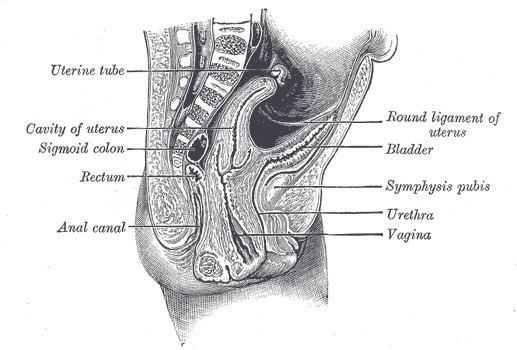Days 60 Latin Gubernaculum | Dorlands/Elsevier g_13/12403750 | |
 | ||
Gives rise to Gubernaculum testis (males), suspensory ligament of ovary, round ligament of uterus, ovarian ligament (females) | ||
The paired Gubernacula (from Ancient Greek κυβερνάω = pilot, steer, also called the Caudal Genital Ligament) are embryonic structures which begin as undifferentiated mesenchyme attaching to the caudal end of the gonads (testes in males and ovaries in females).
Contents
Function during development
As the scrotum and labia majora form in males and females, respectively, the gubernaculum aids in the descent of the gonads (both testes and ovaries).
The testes descend to a greater degree than the ovaries and ultimately pass through the inguinal canal.
Adult structures
The gubernaculum is present only during the development of the urinary and reproductive organs, being replaced by distinct vestiges in males and females.
Males
In males:
Females
In females:
References
Gubernaculum Wikipedia(Text) CC BY-SA
